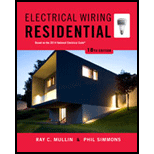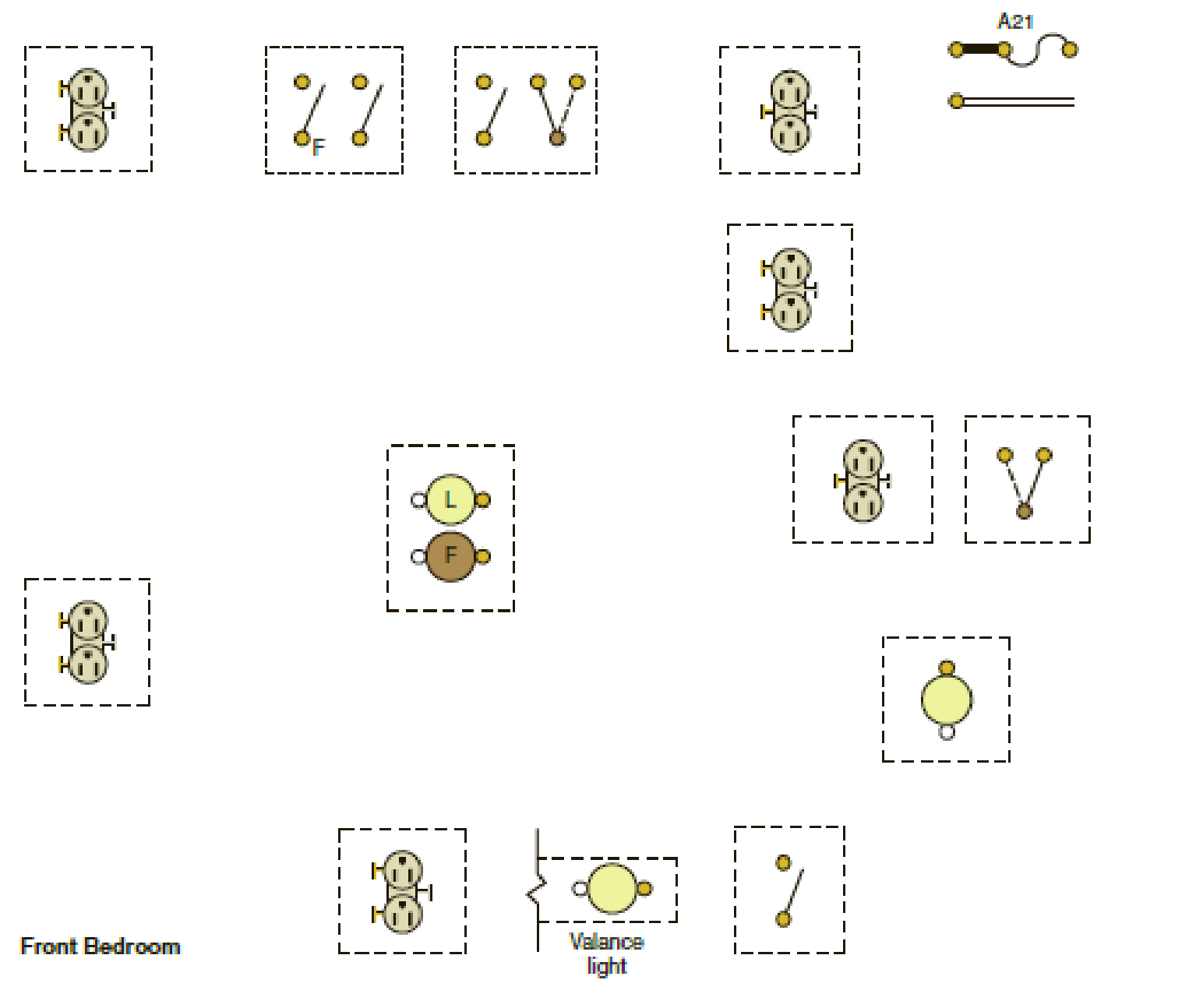
Electrical Wiring Residential
18th Edition
ISBN: 9781285170954
Author: Ray C. Mullin, Phil Simmons
Publisher: Cengage Learning
expand_more
expand_more
format_list_bulleted
Concept explainers
Textbook Question
Chapter 14, Problem 8R
Using the cable layout shown in Figure 14-1, make a complete wiring diagram of Circuit A21. Use colored pencils or pens.

Expert Solution & Answer
Trending nowThis is a popular solution!

Students have asked these similar questions
The first photo is question 1
a) Write down the order of the transfer function in each of the following cases. Assume that
there are no terms in the numerator that will cancel terms in the denominator.
10
H(s)
H(s)
=
s+1
5
(s+3)(s—. 4)
4s1
5
H(s)
=
H(s)
-
83 +1
s27s
6
H(s)
H(s)
=
s(s²+4s)
2s27s+1
84583882 +3s+2
H(s)
83 +8
s+1
=
H(s)
s34s26s+5
s52s4383 + 4s2 +5s +6
Question 5 (
A system is found to have zeros of -3 and poles of 4, and -2. The system also has a gain of
4. Write out the corresponding transfer function.
Question 6.
A system has a transfer function of
What is the gain, K, of the system?
Question 7 (
A system has a transfer function of
H(s)
-
4
8+5
H(s):
=
4
8 +5
A step input of size 3 is applied to the system at time zero (Since we're dealing with transfer
functions, x(0) is also zero at time zero).
a) [10] What is the response ✗(s) of the system?
b) [10] Derive the time dependent solution, x(t), of this response
Chapter 14 Solutions
Electrical Wiring Residential
Knowledge Booster
Learn more about
Need a deep-dive on the concept behind this application? Look no further. Learn more about this topic, electrical-engineering and related others by exploring similar questions and additional content below.Similar questions
- Note: You might want to do the last question first because the last question asks you to write some python code to calculate the zeros and poles. You could use that code here to help you (except the first problem which you should be able to do by inspection alone) Find the poles and zeros for each of the following transfer functions 1. S+3 H(s) = 8 5 2. H(s): = s238 +1 s2 +48 +3 3. s(s+4) H(s) s3+2s23s 4. 82-586 H(s) = - 8382-68 5. H(s): = s2 +48 +3 s45836s2 - 6arrow_forwardWrite python program to plot the zeros and poles if a user provides the coefficients for the numerator and denominator of the transfer function. Since the zeros and poles can be complex, this plot is essentially and argand diagram, where the x axis is the real component and the y axis the imaginary component of a given zero or pole. Create a method called plot-poles zeros(num, den) which takes two lists containing the coefficients. Here is an example and the resulting plot. num [1, 3, 7] # yields zeros at -1.5 +/- 2.17945j den = [1, 4, 5, 3] # yields poles at -2.46557, -0.7672143 +/- 0.7925519j plot_poles_zeros(num, den) Imaginary Page 2 Pole-Zero Plot 3 Zeros × Poles 2 1 -2 1 * Real When you write your code you are only allowed to use the packages numpy and matplotlib. Make sure you label the axes, provide a legend and give a title to your plot (See the example plot). Hint: numpy has a method called roots. When given a list of numbers corresponding to the coefficients of a polynomial,…arrow_forwarda) [10] Compute the zeros and poles for the following transfer function: $2 +5s+6 H(s): s2 +3s+2 b) [10] Factor both polynomials in the numerator and denominator. What does this tell you about one of the poles and zeros you found in a)?arrow_forward
- Pls show neat and whole solutionarrow_forward2. Find the steady-state current i(t) in the circuit shown below when Vs(t) = 100cos(500t -30) volts. Express your answer in cosine form i.e., i(t) Im cos (oot+). (20 pts) LLE) 10052 Vs (E) 40uF 0.3 Harrow_forward1. Determine the thevenin equivalent circuit (i.e., Vth, Zth) from the terminals a-b in the circuit shown below. (15 pts) j512 1052 1020arrow_forward
- Need schematic diagram for this computerized don't use guidelines answer okk will dislikearrow_forwardthe question with its answer but i still dont see how the expansion and the calculation done. please show detailed steps.arrow_forwardQ6) Find the current density J for the magnetic field intensity vectors: (a) H = x²yax + y²zay - 2xzaz pzap + p³a + 3pz²a (b) H = sin cos (c) H = a,arrow_forward
arrow_back_ios
SEE MORE QUESTIONS
arrow_forward_ios
Recommended textbooks for you
 EBK ELECTRICAL WIRING RESIDENTIALElectrical EngineeringISBN:9781337516549Author:SimmonsPublisher:CENGAGE LEARNING - CONSIGNMENT
EBK ELECTRICAL WIRING RESIDENTIALElectrical EngineeringISBN:9781337516549Author:SimmonsPublisher:CENGAGE LEARNING - CONSIGNMENT Electricity for Refrigeration, Heating, and Air C...Mechanical EngineeringISBN:9781337399128Author:Russell E. SmithPublisher:Cengage Learning
Electricity for Refrigeration, Heating, and Air C...Mechanical EngineeringISBN:9781337399128Author:Russell E. SmithPublisher:Cengage Learning

EBK ELECTRICAL WIRING RESIDENTIAL
Electrical Engineering
ISBN:9781337516549
Author:Simmons
Publisher:CENGAGE LEARNING - CONSIGNMENT

Electricity for Refrigeration, Heating, and Air C...
Mechanical Engineering
ISBN:9781337399128
Author:Russell E. Smith
Publisher:Cengage Learning
Types of House Wiring - Types of Electrical Wiring - Electrical Wiring; Author: Learning Engineering;https://www.youtube.com/watch?v=A5P-buWX-dA;License: Standard Youtube License